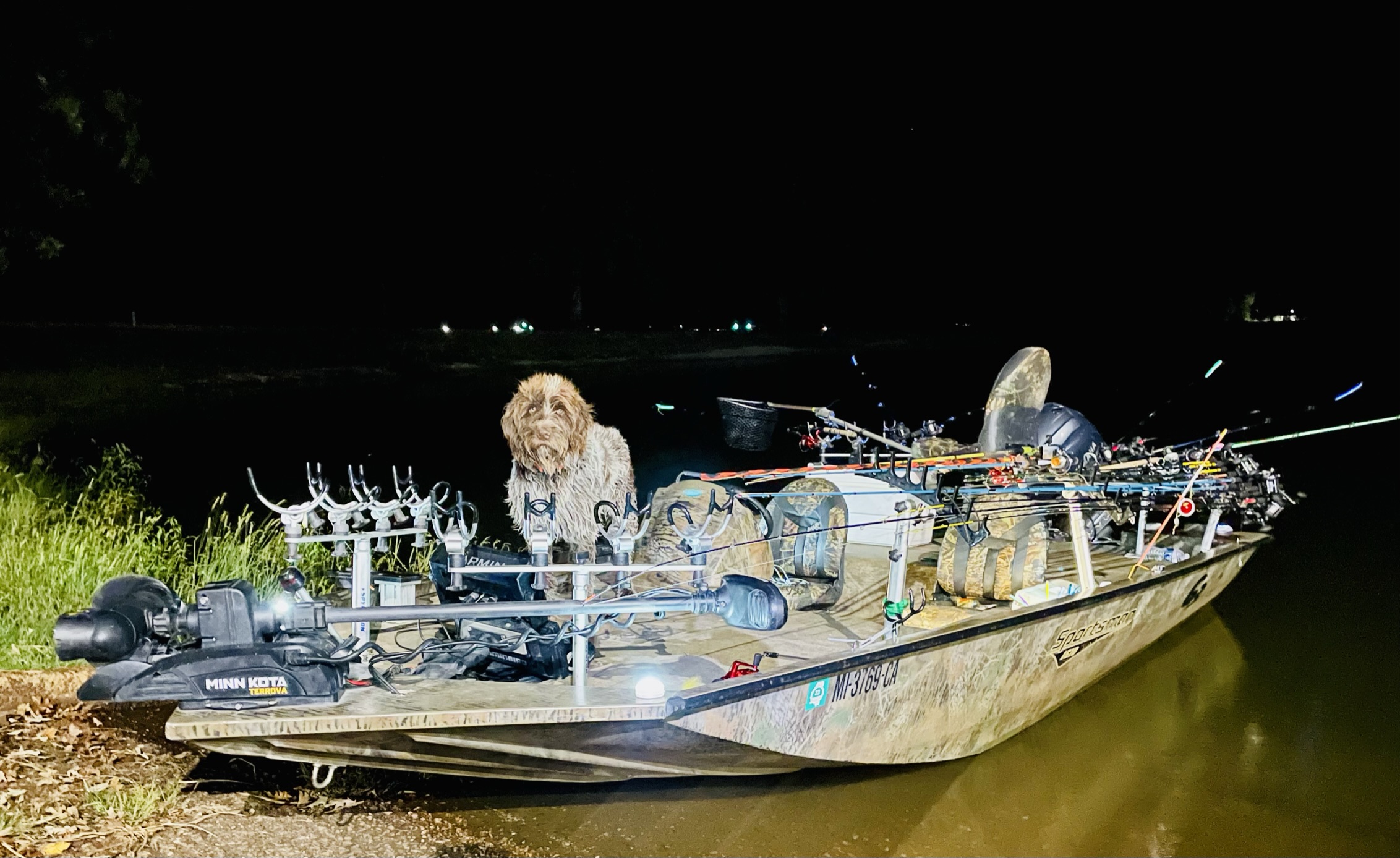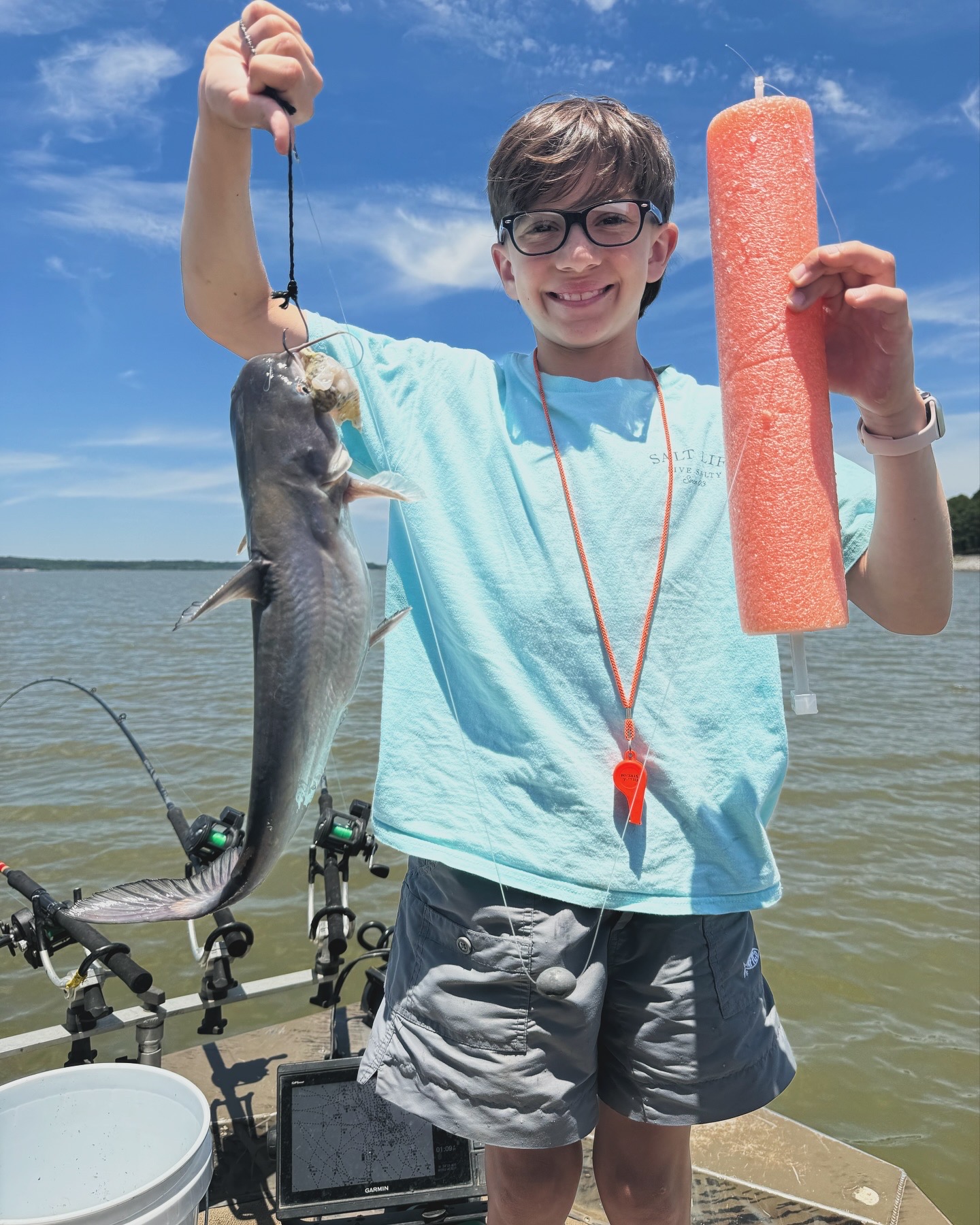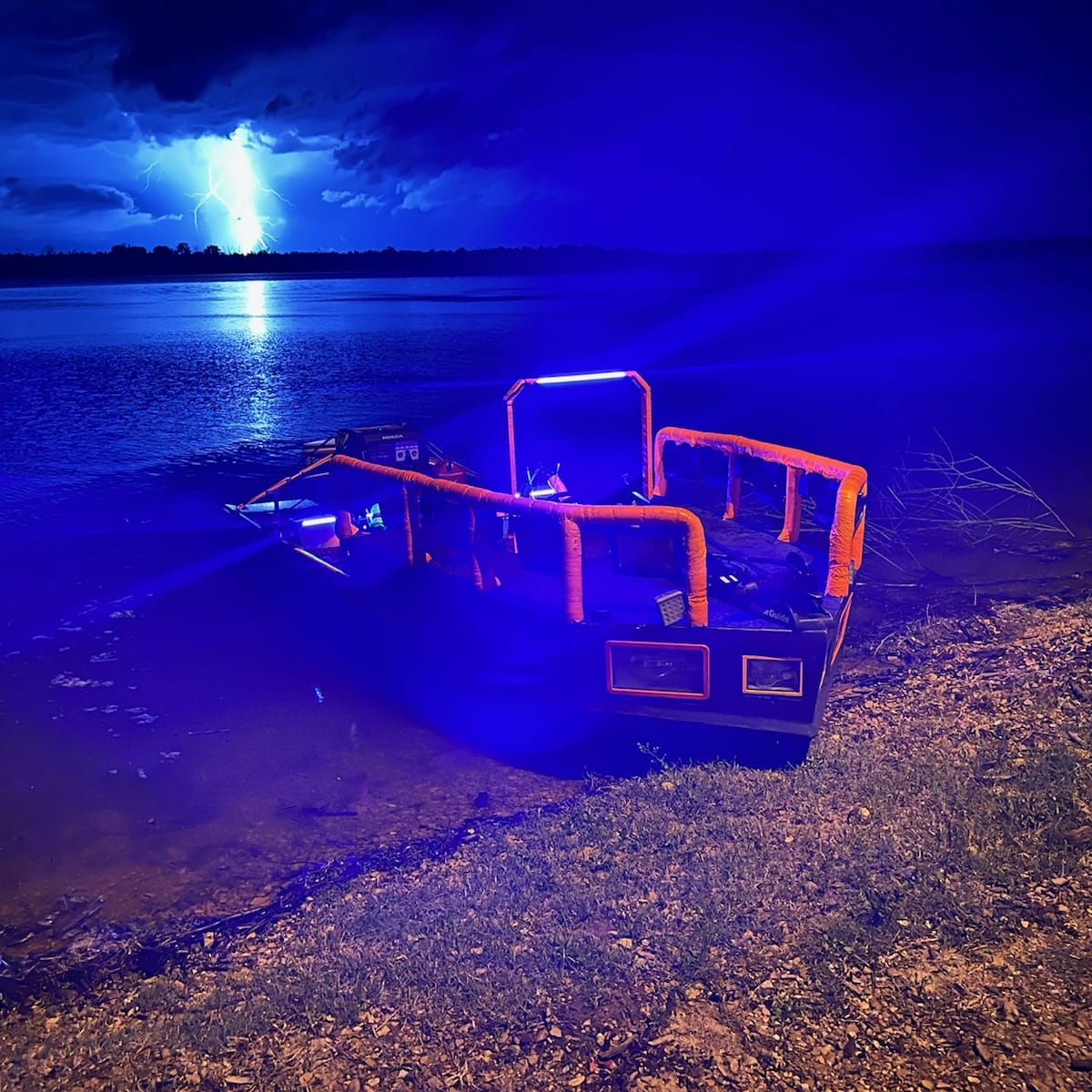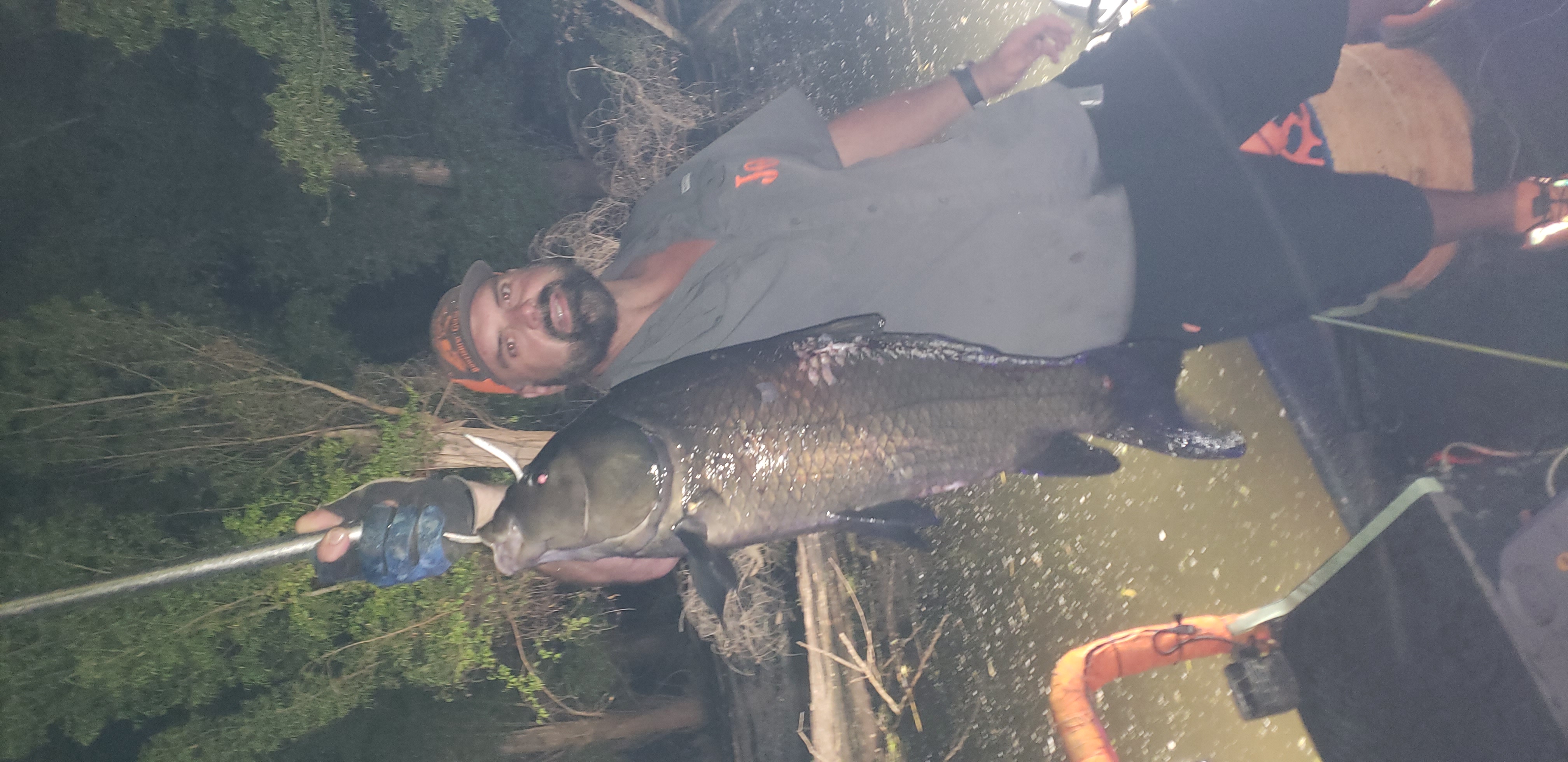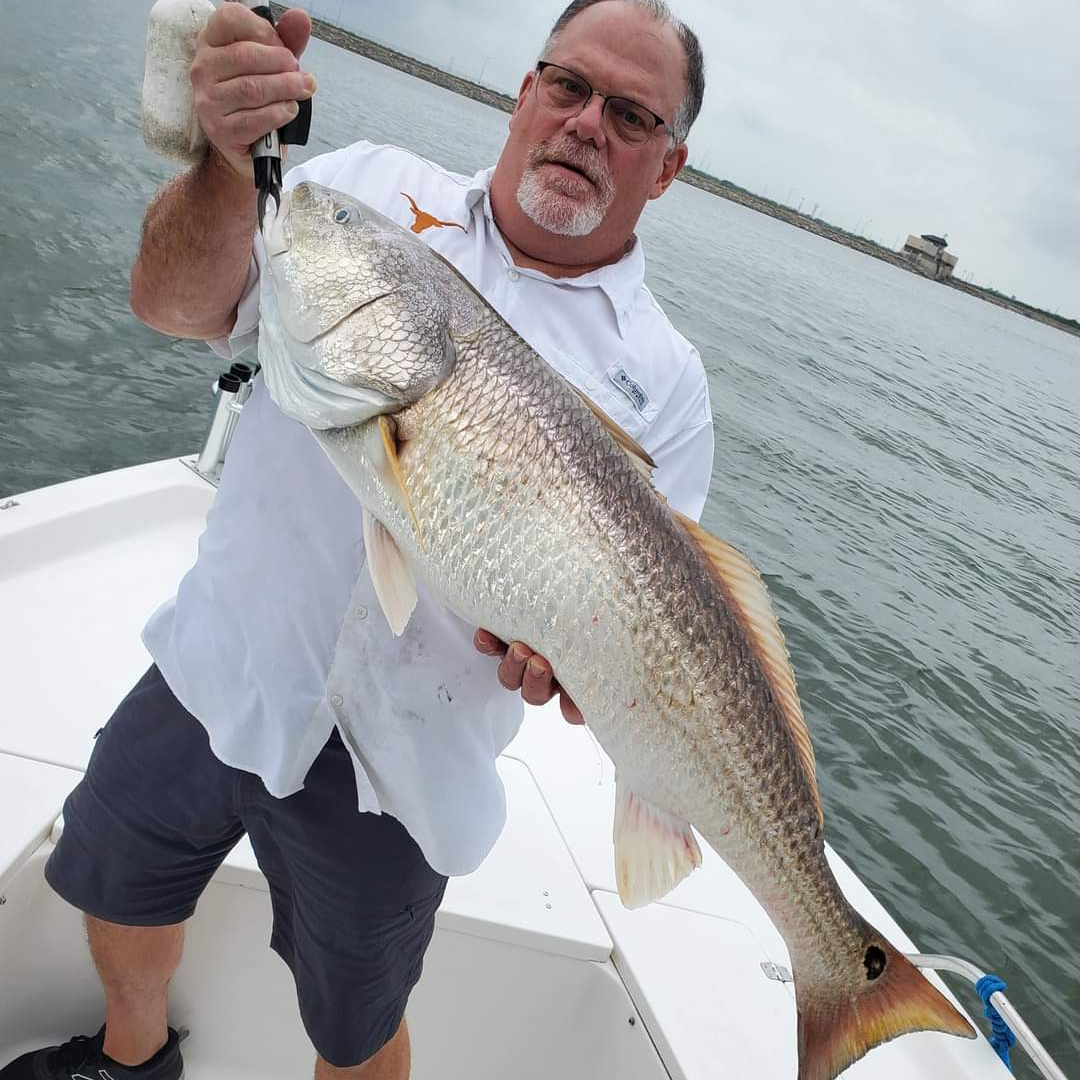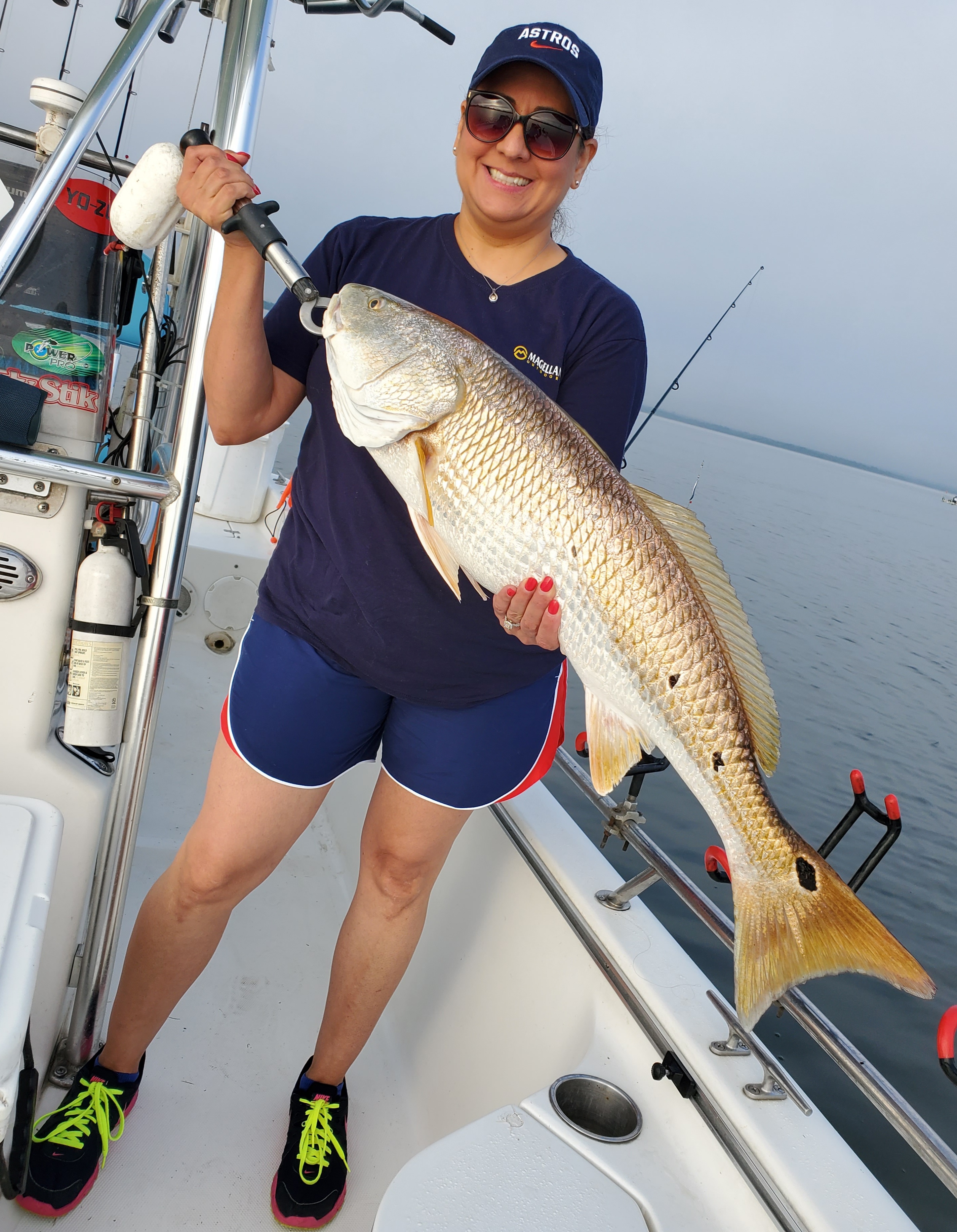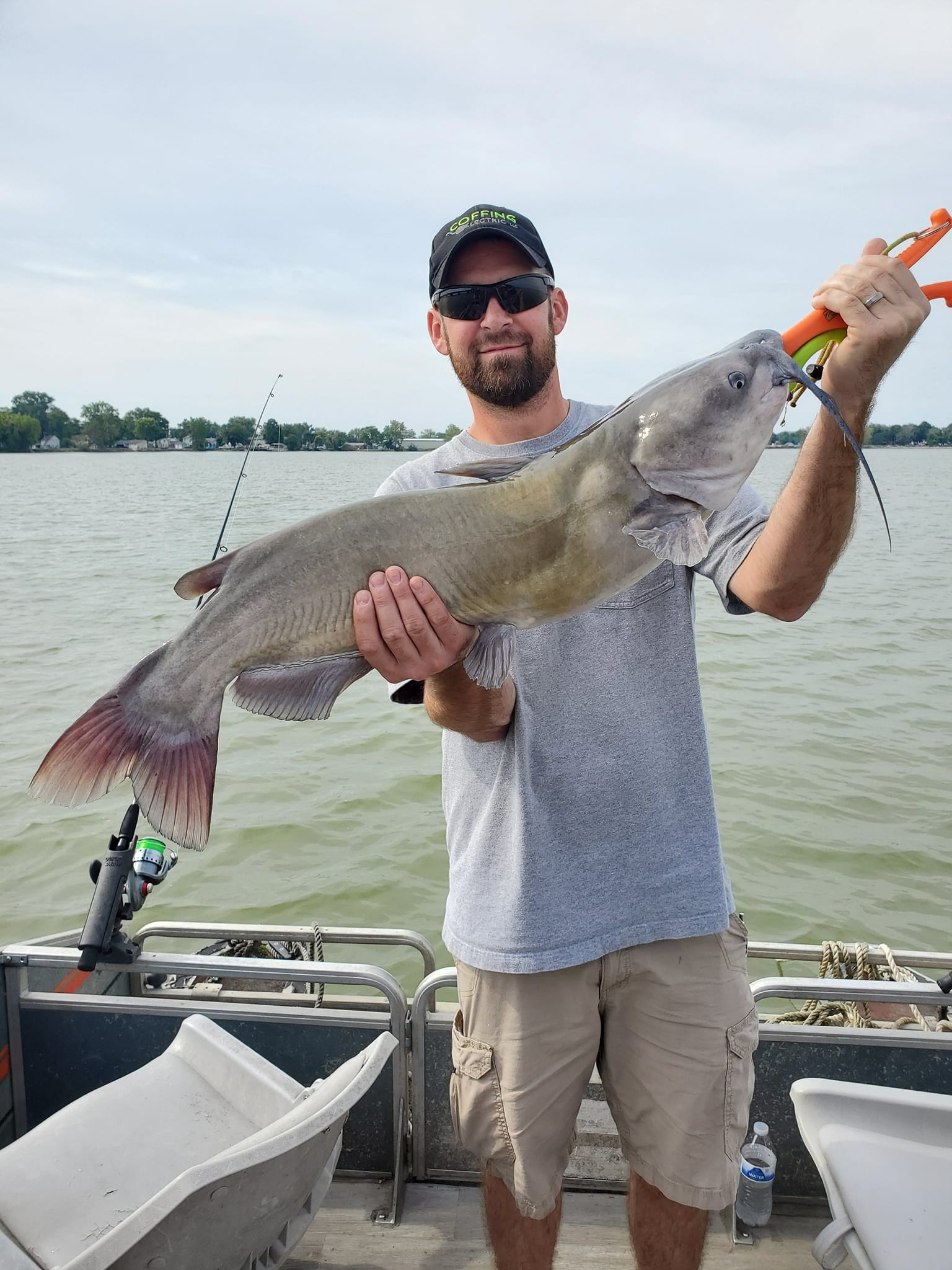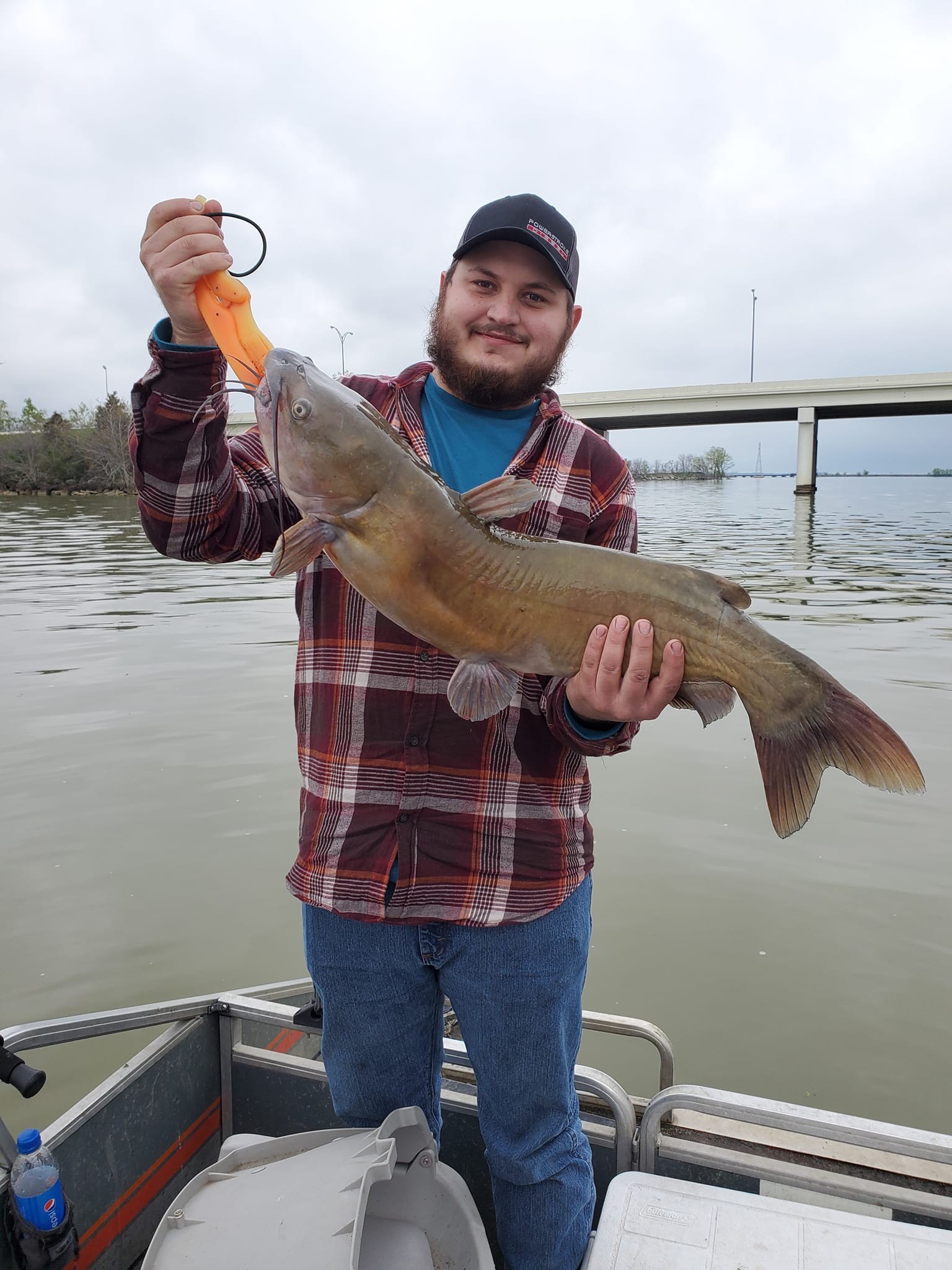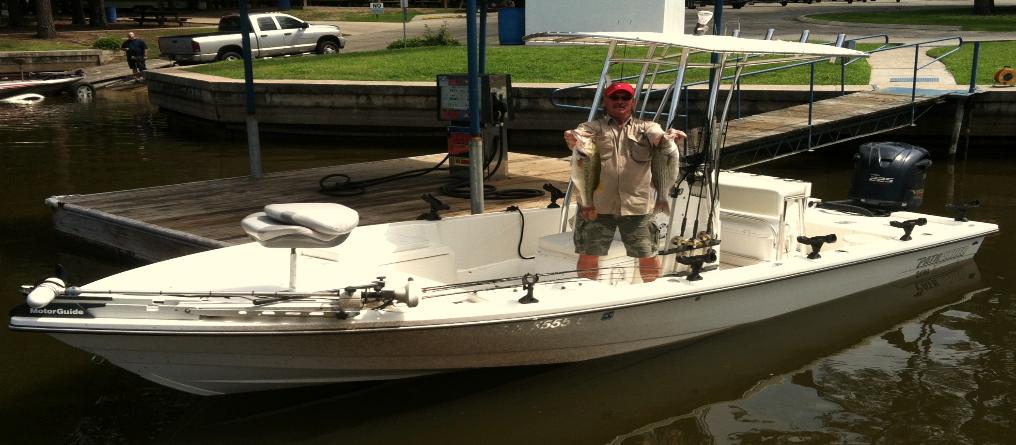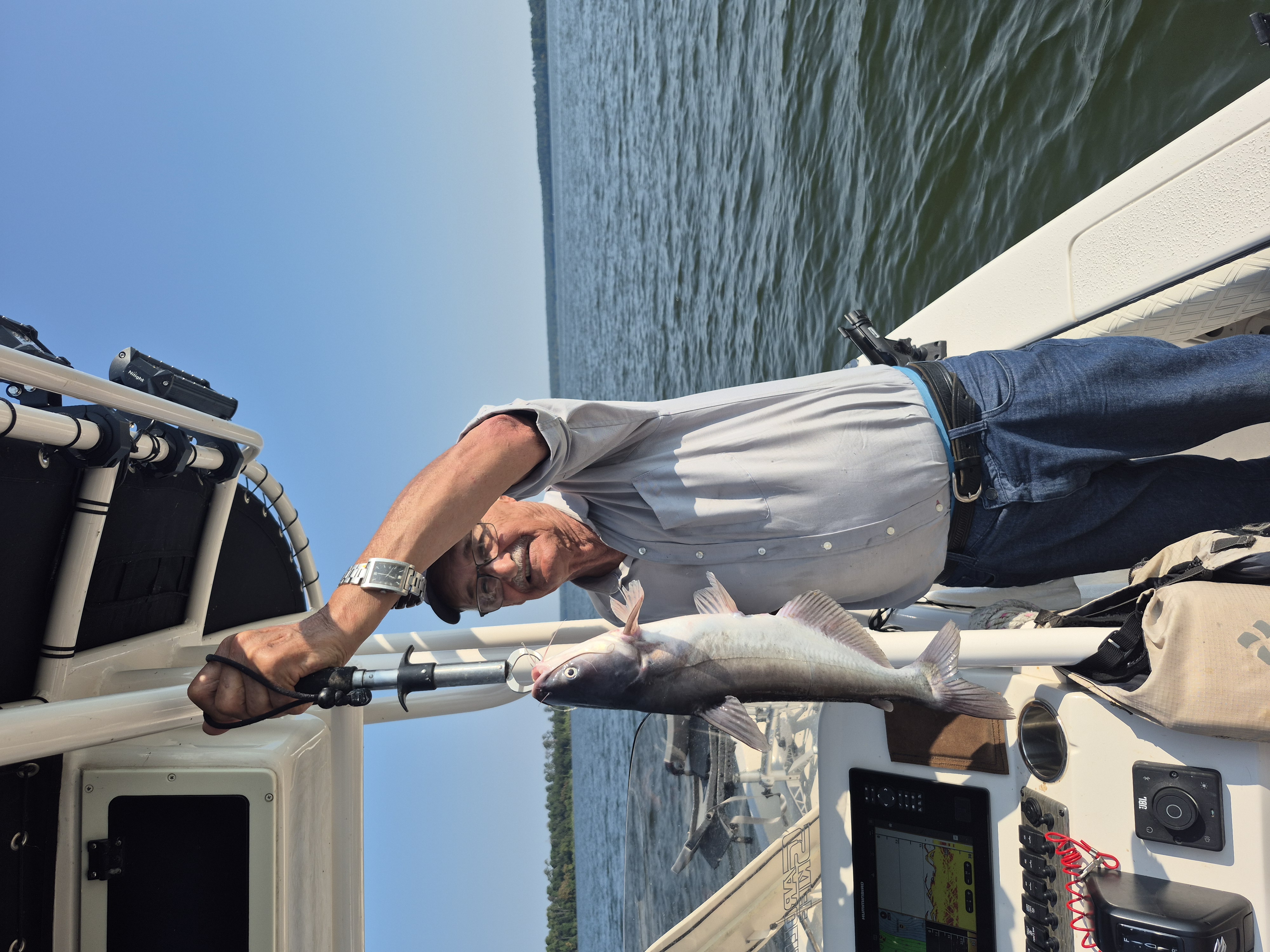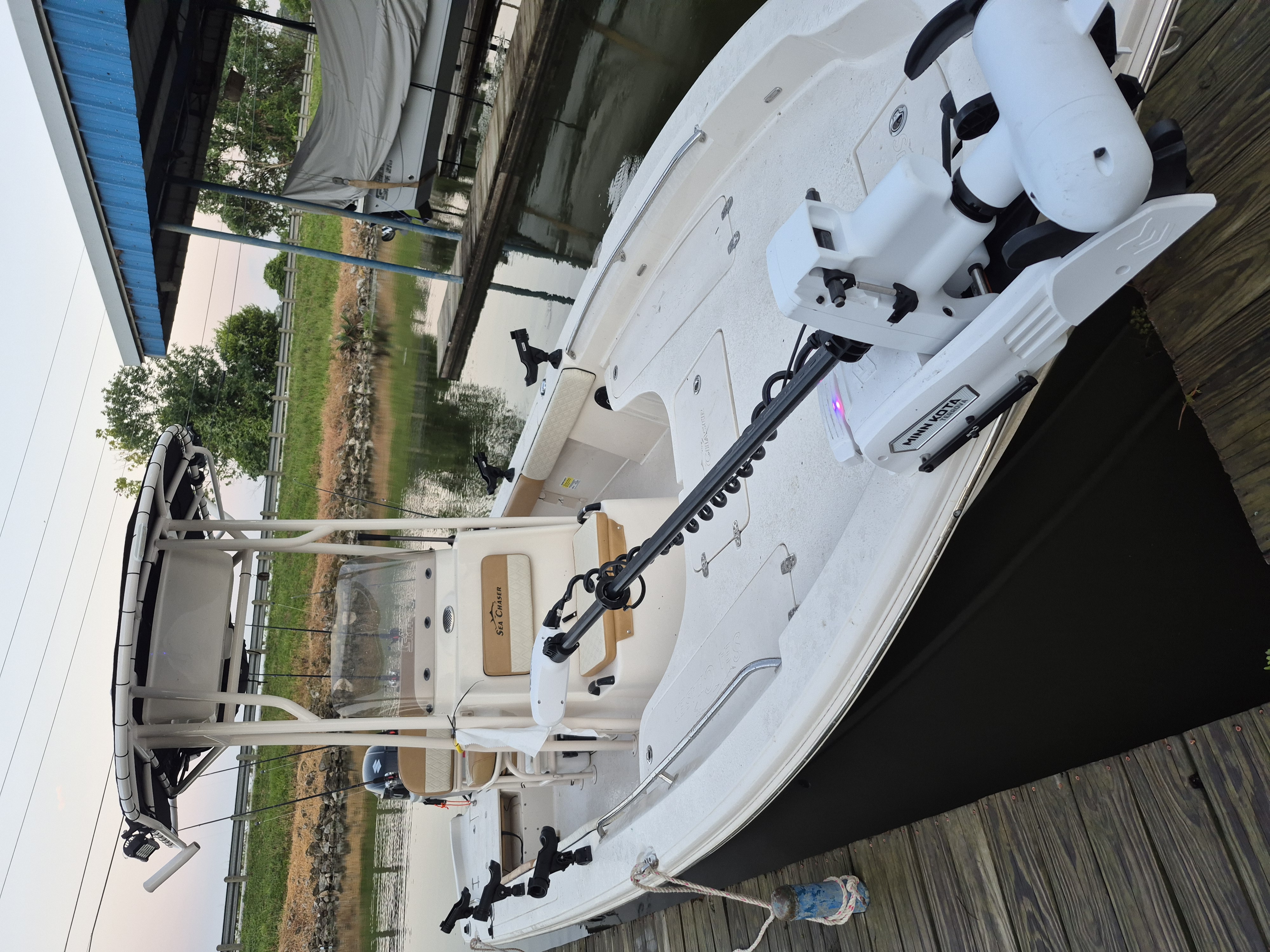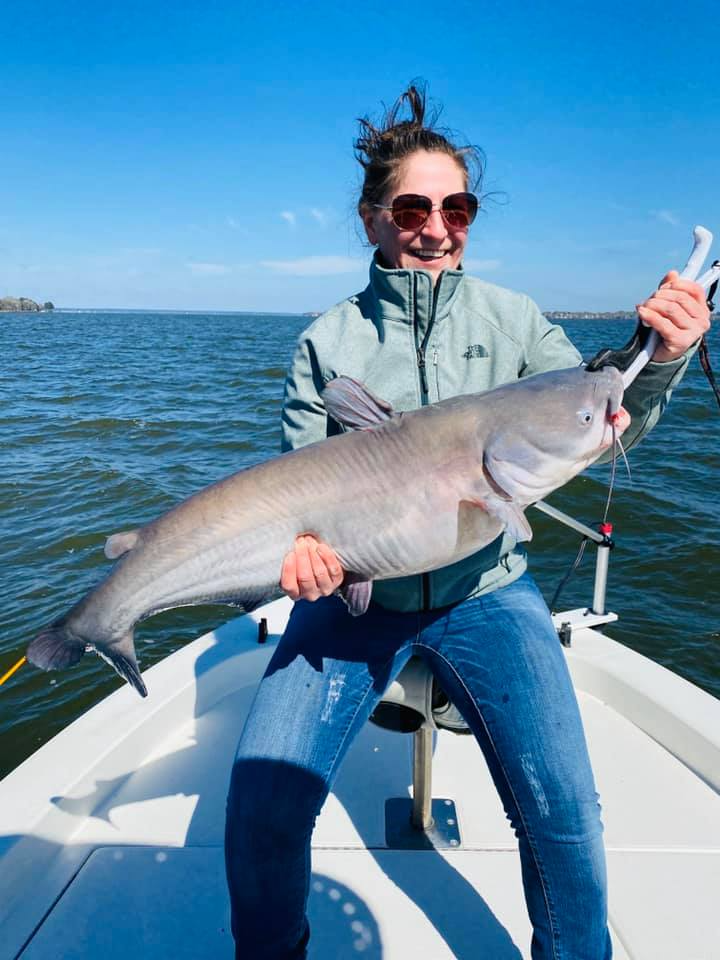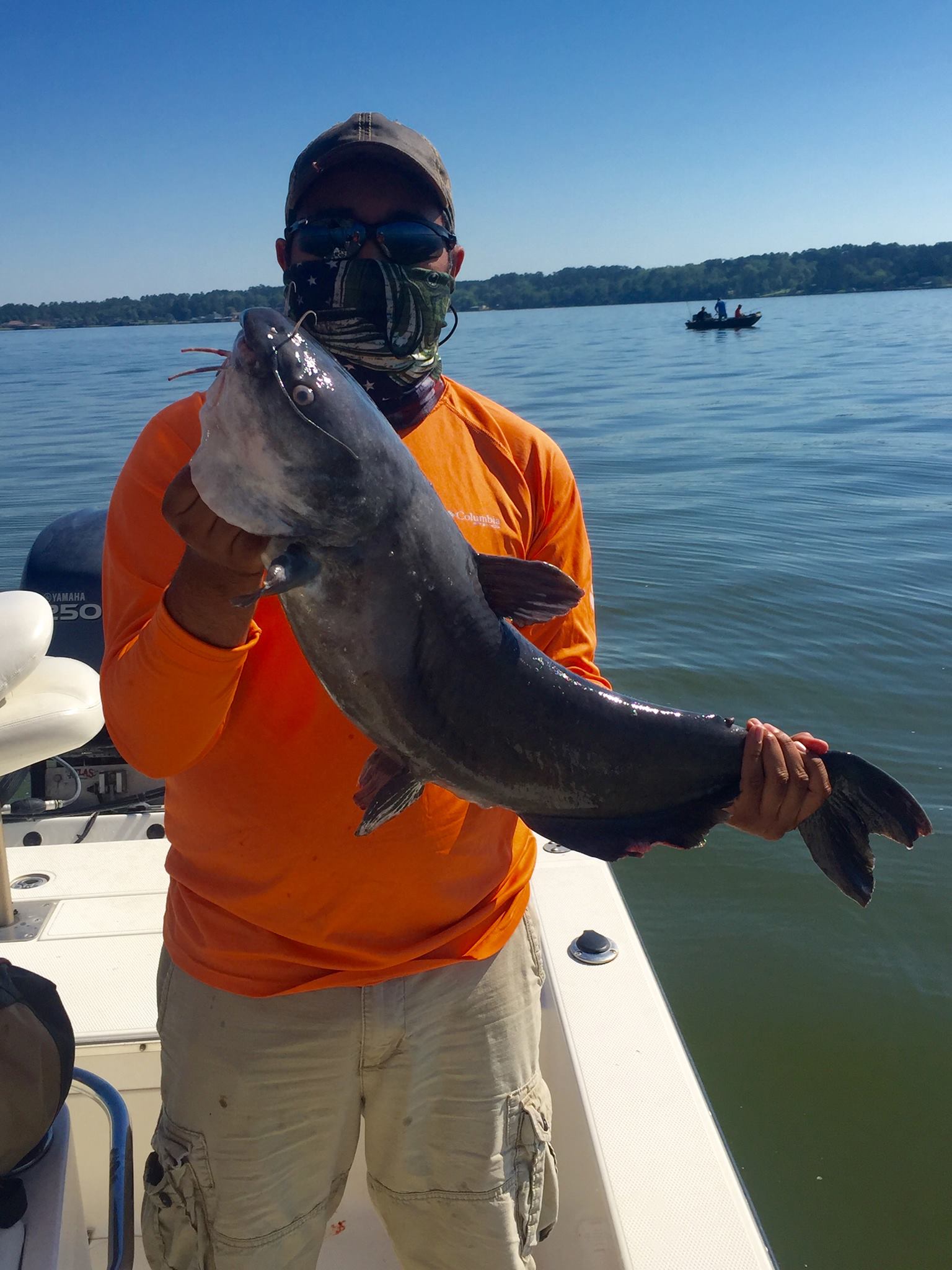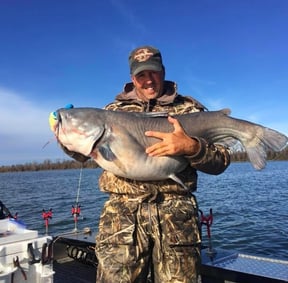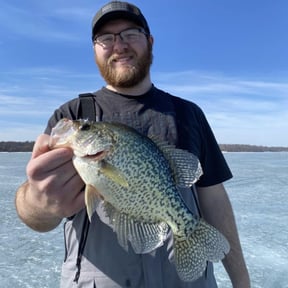Striped Bass Smash In Abilene TX!!
North Mississippi Catfishing
Premier Guided Bowfishing
Half Day Catfish Trip
Redfish Trips
Lake Erie Catfish Special
Half Day Lake Conroe
4 Hr AM Or PM Fishing Trip
Big Ol' Flathead Catfish Catch
"Reeling In Memories"
We started Captain Experiences to make it easy to book fishing and hunting guides around the world. With over 2,000 Damn Good Guides, our platform makes finding and booking a trip seamless. Head here to check out our trips.
What are Catfish?
There are more than 1,000 species of catfish spread across the globe and the variety is stunning. 26 species of catfish from tiny to gigantic reside in the waters of the United States. Catfish are named after their characteristic barbels which resemble a cat's whiskers. These whiskers allow catfish to locate food by smell and sensing vibrations. Catfish taste through their skin which is covered in hundreds of thousands of taste buds. Catfish find food by honing in on vibrations and following smells in the water.
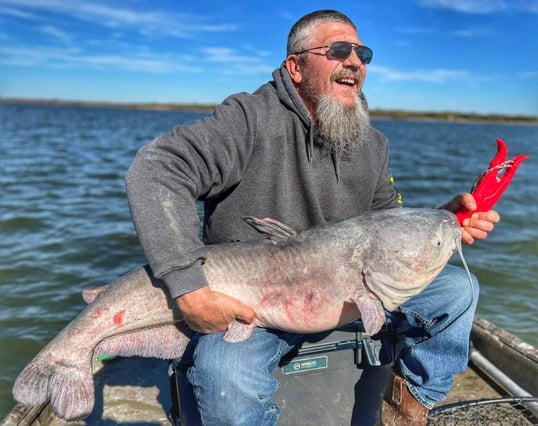
Most catfish are bottom feeders but some species are active predators. Catfish, like sharks, are negatively buoyant due to a small swim bladder which causes them to sink. The characteristic body shape for catfish is a cylindrical body with a flattened head which is advantageous for feed at or near the bottom.
Using their keen senses of vibrations, smell, and taste, catfish typically don't rely on sight to find food or otherwise navigate in their environment which has resulted in most catfish having small eyes. Catfish also have four pairs of small bones called a Weberian apparatus. These bones and a smaller swim bladder allows catfish to create and detect sounds efficiently.
Common Species of Catfish
Out of the 26 species of catfish in North America, there are four that are considered game fish by anglers. The three most prominent catfish species are the channel, blue, and flathead catfish. The bullhead catfish is also fairly prominent across the U.S. but due to its small size they are either considered panfish or too small to consume. It’s worth noting that the following catfish species and subspecies are referred to by their commonly accepted names but regional nicknames of one species may mean something different elsewhere.
Channel Catfish
Channel catfish are the most numerous and popular catfish in the U.S. with a large distribution and even bigger following with approximately eight million anglers targeting them every year. It is also the official state fish of Kansas, Missouri, Iowa, Nebraska, and Tennessee with each state carrying a strong culture of catching and eating catfish. The scientific name for the channel catfish means "fish cat" and "spotted" which describes one of its differentiating factors from other North American catfish. Young channel catfish often have numerous black spots on their body but as they grow these spots become less prominent. Large adult channel catfish may have no spots at all. Channel catfish have two pairs of barbels which were previously thought to sting people when touched. While this is untrue, channel catfish, like most species of catfish, have spines on its pectoral and dorsal fins that can easily poke through your skin.
Another distinct feature of the channel catfish is the deeply forked tail which is only similar to the blue catfish. The coloration of the channel cat is typically olive to brown or blue to gray on their back and sides but fades into their white belly. The mouth of this fish has a longer upper jaw which separates it from the flathead catfish. Channel catfish have a top-end size of about 40 to 50 pounds but the world record weighed 58 pounds. Generally a channel catfish over 10 pounds is a solid fish that is ideal for eating and anything over 20 pounds is a remarkable catch. With that being said, a typical channel catfish in most North American waters will range from two to four pounds and measure 12 to 20 inches. Channel catfish are most abundant in large streams with low or moderate current but often live in the same bodies of water as their larger relative the blue catfish.
Blue Catfish
The blue catfish is the largest species of catfish in North America. While adults usually grow to be less than 2 feet long, they are capable of reaching weights of over 150 pounds and a length of 5 feet. The typical max weight for an adult blue catfish is about 80 pounds but catches of 20 to 30 pounds are the most common. The Appearance of the blue catfish can sometimes look similar to the channel catfish due to their shared blue to gray color, and deeply forked tail. However, blue catfish tend to be a more silvery-blue in color and have a flat dorsal fin. Another distinct aspect of blue catfish are their four pairs of barbels: One pair of barbels extends up from their nose, two pairs around their mouth, and an additional pair on their chin. While blue catfish are opportunistic feeders and will eat almost anything, in some ecosystems they are apex predators and hunt a variety of prey resources. These fish are bottom-dwellers that prefer large rivers with deep channels, swift currents, and sandy bottoms. This environment is manageable due to their size and also offers plenty of opportunities to hunt or scavenge. Blue catfish are native to the Mississippi, , Ohio, and Rio Grande river basins, and can be found in both inland and coastal areas. Blue catfish live in freshwater but can also inhabit higher salinity bodies of water as well. These fish thrive in the higher salinity waters of Lake Texoma and the Red River, and have also become problematic residents of the Chesapeake Bay and its tributaries. Their tolerance of saline conditions means they can swim from one river, through brackish waters and then into a new river system. As a result, these fish have expanded their range throughout the bay. The blue catfish can harm the native ecosystem because they grow large and prey on native species. It has also been reported that they interfering with striped bass gill nets. Luckily blue catfish are tasty and a good source of nutrition. Due to the size of an adult blue catfish, they have few natural predators. However, in the Chesapeake Bay they have become a preferred food source of osprey and bald eagles.
Flathead Catfish
As per it’s name the flathead catfish has broadly flat head but otherwise is a fairly standard looking catfish. The flathead catfish growslarge and are the second largest catfish behind only the blue catfish. The maximum length for a flathead is around 3 to 4 feet and can weigh in excess of 100 pounds. Their scientific name means olive colored mud fish which is an accurate summary of their appearance.
The coloration of flathead catfish is typically tan to yellow on their back and sides with highly mottled markings of black and brown. While most catfish have a white to silvery belly, flatheads are slightly more yellowed or cream colored. The most identifiable traits of this catfish are its longer lower jaw and squared off tail. The longer bottom jaw gives the fish an appearance of having and under-bite. The tail fin of the flat head has a rounded and squared off shape with only a slight notch in the middle.
Flathead catfish are predatory fish that live in holes, logs, and cramped structures. While most catfish are opportunistic, flatheads only hunt live prey. Once they reach adulthood, these fish primarily eat worms, crawfish, and baitfish. In areas with established populations of flathead catfish 50 pound catches are not uncommon.
Bullhead Catfish - Yellow, Black, White, Brown
There are several species of Bullhead Catfish widely distributed across North America. The most common species are black, brown, white, and yellow bullhead. The brown bullhead is the most common member of the bullhead family and is also commonly known as the horned pout.
The bullhead family of catfish are known to be very tolerant of poor conditions such as water quality and low oxygen. This tolerance allows them to live in warm shallow water that contains low oxygen levels that would typically inhibit fish from living there. Bullhead catfish are most prevalent in mud-bottom backwaters of lakes, ponds, streams, and rivers.
The brown bullhead can be distinguished by its dark barbels compared to the light yellow whiskers of the yellow bullhead. Similar to the flathead, bullhead catfish have a squared tail that is slightly notched. Like most catfish, bullheads have pectoral and dorsal spines that can be painful if you get stuck. The brown bullhead catfish also have a yellow to brown colored body that fades from dark green on top to yellow on the belly. These catfish are the smallest and typically only grow to about a foot in length. They are capable of growing to a maximum length of up to 20 inches, but that would be an exceptional fish. While their small size may produce as much meat on each filet as a channel catfish, targeting these fish has become more popular in recent years.
How to Catch Catfish
Catfish have always been, and continue to be, one of the most popular fish in America. These fish are stout fighters and delicious to eat. Their unique appearance and incredible size also undoubtedly play into their mass appeal.
Catfish have always been the fish of the people thanks to their wide availability, abundance, and delicious meat that can be prepared a variety of ways. Another part of this repuation is the simplicity of catching them. The tackle required in low tech and generally inexpensive compared to most game fish.
Best Bait Options for Catfish
Catfish are opportunistic and will eat almost anything. They key here is to play to their keen sense of smell and taste. Using baits like cut baitfish, hotdogs, soap, chicken livers, gizzards, necks, or dog food leave a give off a large scent trail and have been used for decades with success. Recently, unconventional bait like mini marshmallows, pineapple, and corn have been shown to work. However, there’s an incredible amount of commercially sold catfish baits that have been time tested. These commercial baits are typically made from baitfish, mussels, worms, leeches, and frogs, all of which are mixed with a special recipe of spice or flavorings that create strong scent trails. These baits come in many different forms including dried shad, doughy balls, and a thick paste meant for a plastic tube.
Basic Catfish Setup
The most common catfish setups are some variation of a Texas, Carolina, or drop-shot rig. All of these involve a weight, leader, and hook that allow your bait to be cast and fished at or near the bottom. The simplest setup is to tie on a sinker leaving 12 to 18 inches of line on the tag end to use as a leader. Then, tie a hook to the end of the line, bait it, and you’re ready to go.
The hooks you use are personal preference but be sure to check regulations as well. Treble hooks hold bait better and reduce the chance a fish will spit the hook. On the other hand, trying to remove a treble hook can be difficult and kill a fish that was intended to be released.
Trotlines & Jug Lines
Another popular way to catch catfish is by using a trotline or jug line. Before attempting to make or set a trotline, check with your state regulations because it is illegal in many states. These setups require no rod or reel, only nylon rope, weights, and jugs. The weight is tied to one end of the thin rope followed by evenly spaced hooks. Another weight can be placed at the end of the string of hooks to fish entirely on the bottom. From the second weight enough rope should be measured out to reach from the bottom to the surface of the water with a few extra feet then tie on the jug. This method is a set and check style of fishing and is how many of the largest catfish are caught.
Noodling
Noodling is a unique style of fishing where anglers use their hands to catch fish. It is illegal in some states, so again, please check with your state and local regulations before attempting to catch fish this way. Noodling has inherent risks which seem to only enhance the thrill of pulling fish out of the water with your bare hands. The key to noodling is to locate a hole or structure where a catfish may live in a lake or river.
The risky part of noodling is that catfish holes are not only home to catfish. Creatures like snakes, snapping turtles, alligators, and a variety of other potentially dangerous or at least painful encounters could be waiting in the hole at any given time. Noodlers reach into catfish holes blindly because the water is stained and or dark making it impossible to see what might be lurking in the hole.
Another major risk to anglers who noodle for fish is diving and navigating underwater. Noodling is typically done without scuba gear and swimming blindly can cause you to get tangled in or stuck in unseen structures. Fighting with a large catfish underwater may make it hard to return to the surface especially if you begin to fatigue. For these reasons, it's important to go noodling for the first few times with someone who is experienced.
While the dangers of noodling keep many people away, for some they can't get enough. When anglers reach into a catfish hole the catfish will bite down on their hand or arm and hold on. You then have to fight the fish back to the surface and then over to the boat. Catfish often have rough sandpaper like teeth, because of this anglers often use gloves to protect their hands and wrists from getting torn up.
Joey Butrus
Updated on June 22, 2023

March 8, 2022

January 7, 2022

July 1, 2024

April 26, 2022

July 31, 2024
Related Articles
July 21, 2022
April 4, 2022
August 17, 2023
Featured Locations
- Fishing Charters Near Me
- Austin Fishing Guides
- Biloxi Fishing Charters
- Bradenton Fishing Charters
- Cabo San Lucas Fishing Charters
- Cancun Fishing Charters
- Cape Coral Fishing Charters
- Charleston Fishing Charters
- Clearwater Fishing Charters
- Corpus Christi Fishing Charters
- Crystal River Fishing Charters
- Dauphin Island Fishing Charters
- Daytona Beach Fishing Charters
- Destin Fishing Charters
- Fort Lauderdale Fishing Charters
- Fort Myers Fishing Charters
- Fort Walton Beach Fishing Charters
- Galveston Fishing Charters
- Gulf Shores Fishing Charters
- Hatteras Fishing Charters
- Hilton Head Fishing Charters
- Islamorada Fishing Charters
- Jacksonville Fishing Charters
- Jupiter Fishing Charters
- Key Largo Fishing Charters
- Key West Fishing Charters
- Kona Fishing Charters
- Lakeside Marblehead Fishing Charters
- Marathon Fishing Charters
- Marco Island Fishing Charters
- Miami Fishing Charters
- Montauk Fishing Charters
- Morehead City Fishing Charters
- Naples Fishing Charters
- New Orleans Fishing Charters
- New Smyrna Beach Fishing Charters
- Ocean City Fishing Charters
- Orange Beach Fishing Charters
- Panama City Beach Fishing Charters
- Pensacola Fishing Charters
- Pompano Beach Fishing Charters
- Port Aransas Fishing Charters
- Port Orange Fishing Charters
- Rockport Fishing Charters
- San Diego Fishing Charters
- San Juan Fishing Charters
- Sarasota Fishing Charters
- South Padre Island Fishing Charters
- St. Augustine Fishing Charters
- St. Petersburg Fishing Charters
- Tampa Fishing Charters
- Tarpon Springs Fishing Charters
- Venice Fishing Charters
- Virginia Beach Fishing Charters
- West Palm Beach Fishing Charters
- Wilmington Fishing Charters
- Wrightsville Beach Fishing Charters




